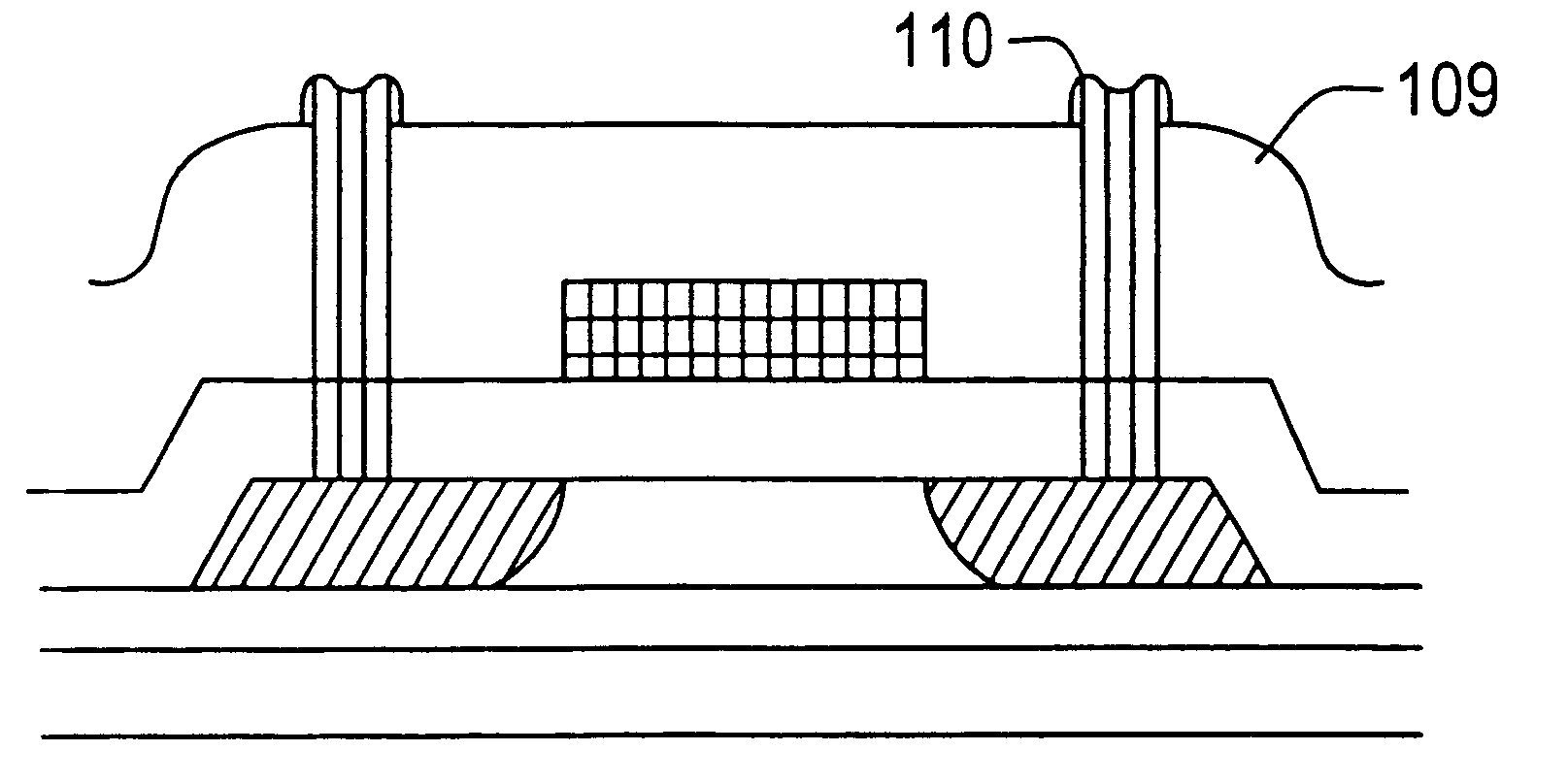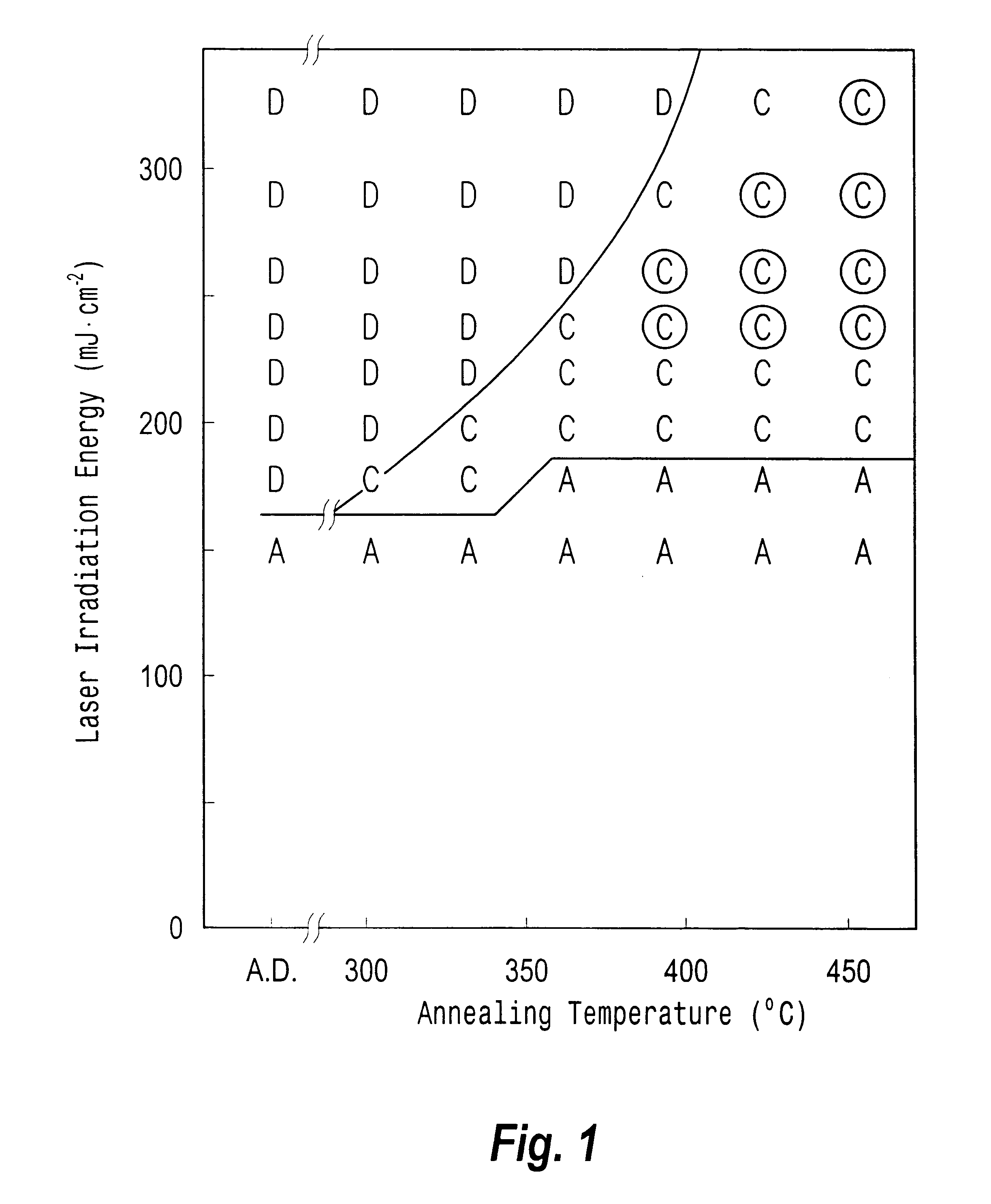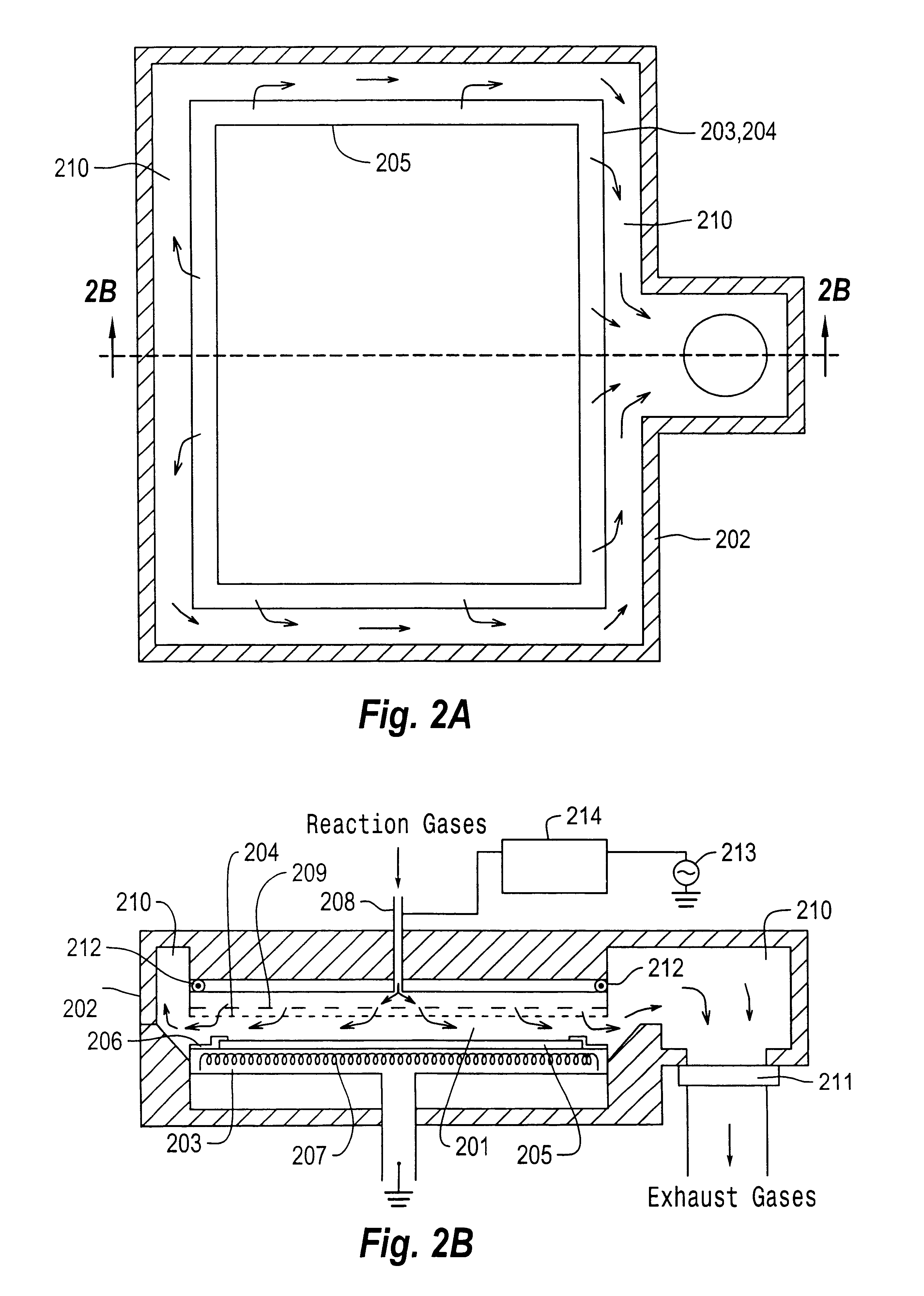Thin film semiconductor device and method for producing the same
a thin film semiconductor and semiconductor technology, applied in non-linear optics, instruments, coatings, etc., can solve the problems of increasing display size, slow operating speed, and inferior electrical characteristics of polysilicon layers
- Summary
- Abstract
- Description
- Claims
- Application Information
AI Technical Summary
Problems solved by technology
Method used
Image
Examples
example 1
An example of a semiconductor film according to the present invention and its fabrication by PECVD will be explained. After forming an underlevel protection layer, consisting of an insulating material such as a silicon oxide film, on at least part of the surface of a substrate, a semiconductor film is formed over this underlevel protection layer using the PECVD reactor described in detail in section (2-3).
A 360 mm.times.475 mm.times.1.1 mm glass substrate (OA-2) which is at room temperature is set in the PECVD reactor, the lower plate electrode 203 of which is maintained at a temperature of 380.degree. C. The recipe followed once the substrate is in place in the PECVD reaction furnace is as follows.
(Preheat 1)
Time: t=90 s
Hydrogen flow rate: H.sub.2 =100 SCCM
Helium flow rate: He=3000 SCCM
High frequency power: RF=0 W (no plasma)
Pressure: P-3.0 Torr
Electrode separation: S=37.1 mm
Lower plate electrode temperature: Tsus=380.degree. C.
(Preheat 2)
Time: t=60 s
Silane flow rate: SiH.sub.4 =10...
example 2
A thin film semiconductor device was fabricated using the as-deposited semiconductor film obtained as described in Example 1 as the active layer of a TFT.
First, underlevel protection layer 102, which consists of a silicon oxide film, is formed on substrate 101 by PECVD. Then, without breaking the vacuum, an intrinsic silicon layer which becomes the active layer of the thin film semiconductor device is sequentially deposited over this underlevel protection layer using the method described in Example 1. The thickness of the underlevel protection layer is 300 nm and the thickness of the semiconductor film is 90 nm. Accordingly, the semiconductor film deposition time is 247 seconds. Semiconductor films obtained in this way can be used in the as-deposited state as the active layer which serves, for example, as the channel region of the TFT.
After the substrate is removed from the PECVD reactor, these microconductor film is patterned and thin film layer 103, which later becomes the active ...
example 3
An active matrix substrate was fabricated using the thin film semiconductor devices obtained in Example 2 as the pixel switching elements for a high-definition color LCD which was comprised of 768 (rows).times.1024 (columns).times.3 (colors)=2359296 pixels. As in Example 2, the source electrode and source interconnects in Example 3 are aluminum; the drain electrodes, however, are indium tin oxide (ITO). A liquid crystal panel was manufactured that employed an active matrix substrate obtained in this way for one of the two substrates in the substrate pair. A liquid crystal display device was produced by assembling the liquid crystal panel thus obtained together with external peripheral driving circuits and a backlight unit. Because the TFTs are high performance and the parasitic capacitance of the transistors is extremely small, a high aperture ratio, bright, high-quality liquid crystal display device was obtained. In addition, because the fabrication process for the active matrix su...
PUM
| Property | Measurement | Unit |
|---|---|---|
| pressure | aaaaa | aaaaa |
| deposition rate | aaaaa | aaaaa |
| temperature | aaaaa | aaaaa |
Abstract
Description
Claims
Application Information
 Login to View More
Login to View More - R&D
- Intellectual Property
- Life Sciences
- Materials
- Tech Scout
- Unparalleled Data Quality
- Higher Quality Content
- 60% Fewer Hallucinations
Browse by: Latest US Patents, China's latest patents, Technical Efficacy Thesaurus, Application Domain, Technology Topic, Popular Technical Reports.
© 2025 PatSnap. All rights reserved.Legal|Privacy policy|Modern Slavery Act Transparency Statement|Sitemap|About US| Contact US: help@patsnap.com



